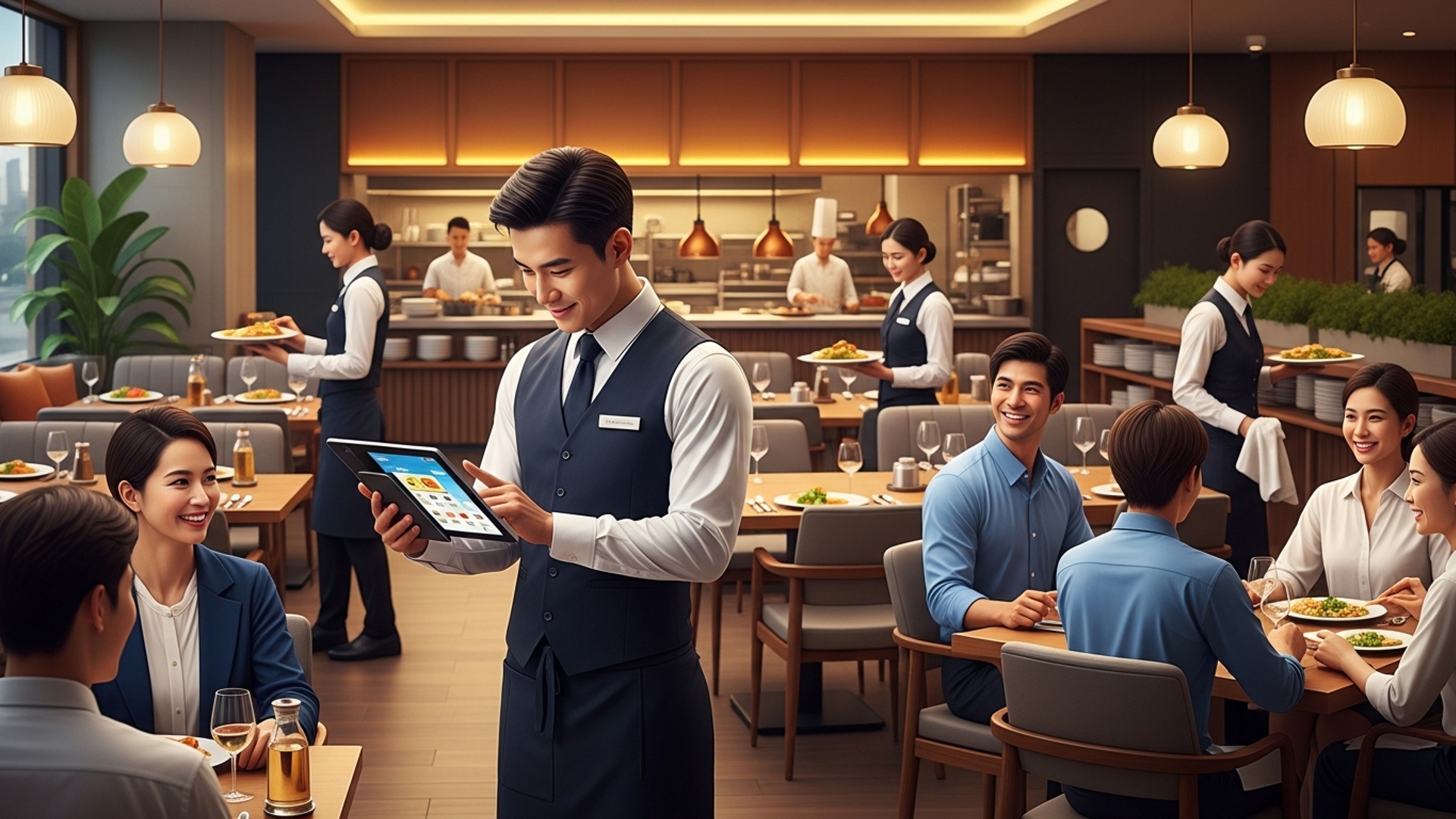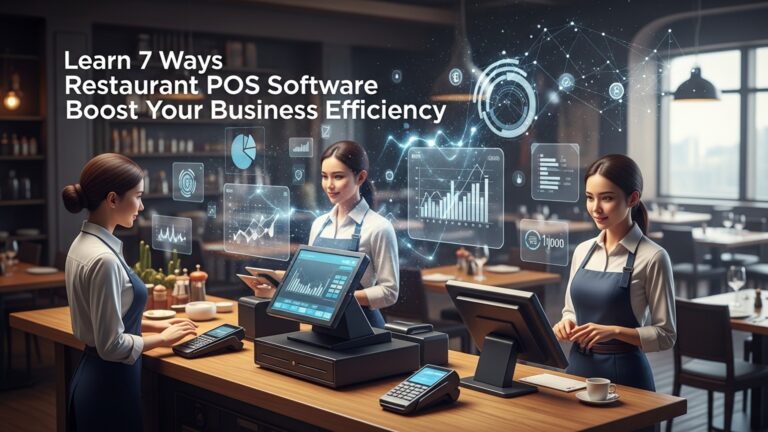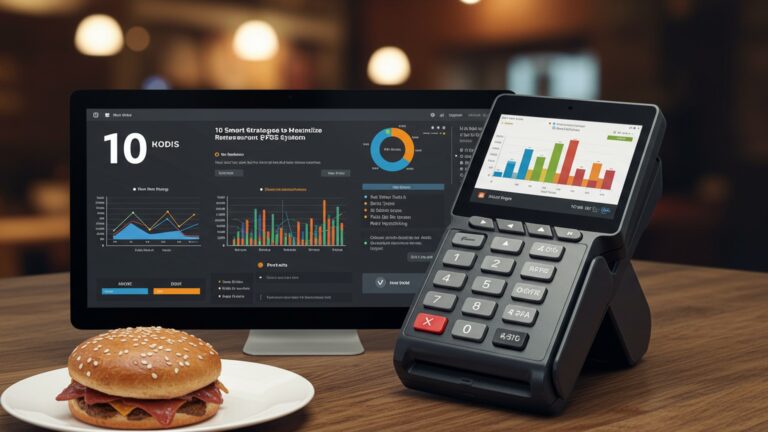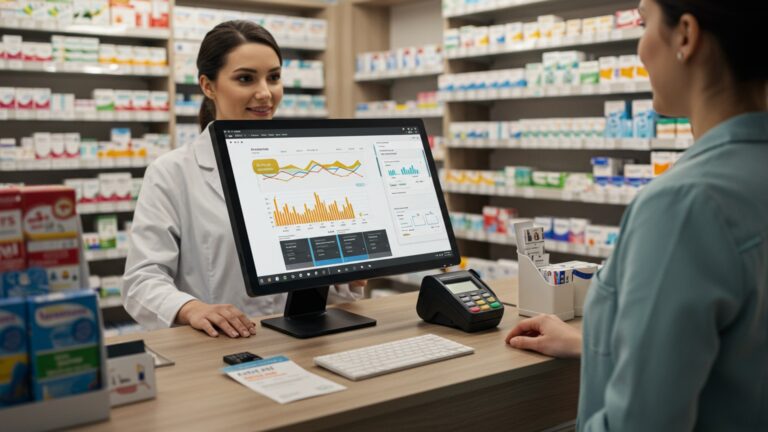6 Ways Restaurant POS Improves Customer Service and Efficiency
The modern restaurant industry navigates unprecedented challenges, from fluctuating supply chains to persistent labor shortages, making operational efficiency and exceptional customer service paramount. Advanced Restaurant POS software transcends basic transaction processing; it now acts as a dynamic operational hub, integrating everything from real-time inventory adjustments to personalized guest preferences and loyalty program management. Consider how mobile POS terminals empower servers to take orders and process payments tableside, drastically reducing wait times and improving order accuracy, directly enhancing the dining experience. Moreover, cloud-based systems provide actionable data analytics, allowing managers to optimize staffing based on predicted demand and identify peak performance areas, thereby boosting profitability and employee satisfaction in an increasingly competitive market.

Elevating the Dining Experience with Faster Order Taking and Processing
A modern restaurant thrives on speed and precision. at the heart of achieving this lies robust Restaurant POS software. Far more than just a glorified cash register, a Point-of-Sale (POS) system is an integrated technology hub that orchestrates critical front-of-house and back-of-house operations. Traditionally, order taking involved a server manually writing down orders, carrying them to the kitchen. then waiting for preparation. This multi-step, often error-prone process frequently led to delays, miscommunications. ultimately, frustrated customers. With sophisticated Restaurant POS software, this entire workflow is digitized and dramatically accelerated. Servers can input orders directly into a handheld device or a fixed terminal at the table, sending them instantly to the kitchen display system (KDS) or a printer. This immediate communication reduces wait times significantly, allowing kitchen staff to begin preparation almost as soon as the customer finishes ordering. Consider a busy Friday night:
- Without POS: A server takes an order from Table 5, walks to the kitchen, waits for a chef to acknowledge, then heads to Table 8.
- With POS: The server inputs Table 5’s order on a tablet, which is instantly displayed in the kitchen. While the kitchen begins prep, the server is already at Table 8 taking their order.
This seamless transition not only enhances the customer’s experience by reducing their wait time but also boosts operational efficiency, enabling restaurants to serve more guests without compromising service quality. The ability of Restaurant POS software to streamline this fundamental process is a cornerstone of modern hospitality.
Ensuring Accuracy and Convenience in Billing and Payment Processing
One of the most critical touchpoints in the customer journey is the payment process. Inaccurate bills or cumbersome payment methods can quickly sour an otherwise pleasant dining experience. Restaurant POS software revolutionizes this aspect by ensuring unparalleled accuracy and offering a wide array of convenient payment options, directly improving both customer satisfaction and operational efficiency. Gone are the days of manual bill calculations and potential human errors that could lead to overcharges or undercharges. A POS system automatically tabulates all items ordered, applies discounts. calculates taxes with precision. This eliminates discrepancies and builds trust with the customer. Moreover, modern Restaurant POS software supports a diverse range of payment methods, catering to contemporary customer preferences:
- Credit/Debit Cards
- Contactless Payments
- Mobile Payments
- Split Payments
- Gift Cards & Loyalty Points
Secure EMV chip and PIN processing.
Apple Pay, Google Pay. other NFC-enabled options for quick, hygienic transactions.
Integration with popular payment apps.
Easily dividing bills among multiple diners, a common request that can be complex without a POS.
Seamless redemption and application of restaurant-specific rewards.
This flexibility not only makes the payment process smoother and faster for the customer but also simplifies reconciliation for the restaurant staff. For instance, a group of friends wanting to split a bill three ways, with one paying cash and two paying by card, can be handled effortlessly by a good POS system, preventing awkward situations and saving valuable time for both parties. The efficiency gained here translates directly into faster table turnover and a more professional image.
Optimizing Inventory Management to Prevent Disappointment
While seemingly a back-of-house function, effective inventory management directly impacts customer service and overall restaurant efficiency. Nothing frustrates a diner more than ordering a desired dish only to be informed that the kitchen has run out of a key ingredient. Restaurant POS software plays a pivotal role in preventing such disappointments and optimizing resource allocation. Modern POS systems integrate inventory tracking capabilities, monitoring ingredient usage in real-time. When an item is sold, the corresponding ingredients are automatically deducted from the inventory count. This provides a precise overview of stock levels, eliminating the guesswork associated with manual tracking. Here’s how a POS system enhances inventory management:
- Real-time Tracking
- Automated Reordering
- Waste Reduction
- Menu Availability
Automatically updates stock levels for every ingredient as dishes are sold.
Can be configured to trigger alerts or even automatically place orders with suppliers when stock falls below a predefined threshold.
By accurately tracking usage and predicting demand, a POS helps minimize food waste due to spoilage or over-ordering.
Allows staff to know immediately if a menu item is unavailable, preventing them from taking orders that cannot be fulfilled.
For example, if a restaurant experiences a sudden rush on its popular avocado toast, the Restaurant POS software will rapidly deplete the avocado inventory count. Before a full stock-out occurs, the system can alert the manager or even auto-generate a purchase order to the supplier, ensuring a continuous supply and preventing the need to tell customers, “Sorry, we’re out of avocado.” This proactive approach ensures menu consistency and customer satisfaction while significantly boosting operational efficiency by reducing waste and optimizing purchasing.
Crafting Personalized Customer Experiences Through Data
In today’s competitive culinary landscape, generic service is no longer enough. Customers seek personalized experiences that make them feel valued and understood. Restaurant POS software is a powerful tool for gathering and leveraging customer data to create these bespoke interactions, thereby significantly enhancing customer service and fostering loyalty. Many advanced POS systems come equipped with customer relationship management (CRM) features that allow restaurants to build detailed profiles for their diners. This includes:
- Order History
- Visit Frequency
- Loyalty Program Enrollment
- Personal Notes
Remembering past orders, preferred dishes. dietary restrictions.
Tracking how often a customer dines at the restaurant.
Managing points, rewards. special offers.
Servers can add specific preferences (e. g. , “likes extra spicy,” “always orders decaf”).
Armed with this insights, staff can offer a truly personalized service. Imagine a regular customer walking in. the server, with a quick glance at their POS tablet, greets them by name and asks if they’d like “the usual.” Or perhaps, remembering a customer’s vegetarian preference, a server can proactively recommend a new plant-based special. This level of attentiveness makes guests feel recognized and appreciated, transforming a simple meal into a memorable experience.
| Feature | Impact on Customer Service | Impact on Efficiency |
|---|---|---|
| Order History Tracking | Personalized recommendations, familiar service | Faster order taking, less questioning |
| Loyalty Program Integration | Reward regulars, encourage repeat visits | Automated points/rewards management |
| Dietary Restriction Notes | Ensures safe and tailored dining | Prevents errors, streamlines kitchen communication |
This data-driven approach, facilitated by comprehensive Restaurant POS software, not only deepens customer relationships but also provides actionable insights for targeted marketing campaigns and menu development, driving both satisfaction and repeat business.
Streamlining Kitchen Operations for Faster, Fresher Food
The kitchen is the engine of any restaurant. its efficiency directly impacts the speed and quality of food delivered to the customer. Restaurant POS software, particularly through its integration with Kitchen Display Systems (KDS), plays a pivotal role in streamlining kitchen operations, minimizing errors. ensuring a smoother workflow from order placement to plate delivery. Traditional kitchens often rely on paper tickets, which can get lost, become illegible, or lead to miscommunication during busy periods. A KDS, integrated with the POS, replaces these paper tickets with digital screens strategically placed throughout the kitchen (e. g. , prep station, grill, expediter). When an order is placed at the front-of-house via the Restaurant POS software, it instantly appears on the relevant KDS screens. This offers several benefits:
- Instant Communication
- Improved Accuracy
- Order Prioritization
- Reduced Errors
- Course Management
Orders are relayed to the kitchen in real-time, eliminating delays.
Digital tickets are always clear and legible, reducing the chance of misread orders.
KDS can display orders by time, helping chefs prioritize and manage their workflow efficiently.
Specific instructions (e. g. , “no onions,” “extra sauce”) are clearly highlighted, minimizing mistakes.
Orders can be sent to different stations based on courses, ensuring dishes are prepared and served in the correct sequence.
Consider a complex order with appetizers, main courses. specific dietary requests. Without a KDS, coordinating this can be chaotic. With a KDS powered by Restaurant POS software, the appetizer order goes to the cold station, the main course to the grill. the dietary modification is clearly flagged for the relevant chef. Once a dish is completed, the chef taps the screen, marking it as ready, which can then alert the expediter or server. This synchronized effort ensures that food is prepared accurately, efficiently. delivered fresh, significantly enhancing the overall customer experience.
Driving Business Growth Through Data-Driven Decision Making
Beyond the immediate operational benefits, one of the most powerful advantages of Restaurant POS software lies in its ability to collect and review vast amounts of data. This data transforms into actionable insights that empower restaurant owners and managers to make informed decisions, optimizing efficiency and driving strategic improvements in customer service and profitability. A comprehensive POS system generates detailed reports on virtually every aspect of the business:
- Sales Analytics
- Labor Costs
- Inventory Reports
- Customer Trends
- Void/Discount Reports
Identify best-selling dishes, peak sales hours. popular promotions.
Track employee hours, overtime. sales per labor hour, aiding in optimal staffing.
Pinpoint slow-moving items, identify waste. optimize purchasing.
interpret demographics, average spend. loyalty program effectiveness.
Monitor potential issues and prevent loss.
For instance, by analyzing sales data from the Restaurant POS software, a manager might discover that brunch sales spike significantly on weekends between 10 AM and 1 PM. This insight allows them to adjust staffing levels for those specific hours, ensuring enough servers are on hand to provide prompt service during peak demand, thus improving customer satisfaction and maximizing revenue. Conversely, identifying slow periods enables them to reduce staff, preventing unnecessary labor costs. This analytical capability extends to menu engineering. If a particular dish consistently has low sales despite high ingredient costs, the Restaurant POS software data will highlight this, prompting a review or removal of the item. This precision in decision-making, backed by concrete data rather than mere intuition, is invaluable. It enables restaurants to continually refine their operations, enhance their offerings. provide a consistently superior customer experience, ultimately fostering sustained business growth and profitability.
Conclusion
Embracing a modern restaurant POS system isn’t merely an upgrade; it’s a strategic imperative for cultivating exceptional customer experiences and streamlining operations. From enabling swift, accurate order taking, even table-side, to automating inventory management, the synergy between service and efficiency becomes palpable. I’ve personally observed how a well-implemented POS transforms a chaotic rush into a smooth ballet, reducing wait times and empowering staff to focus on genuine guest interaction. My personal tip? Don’t just install it; truly master its capabilities, especially its reporting features. In today’s competitive landscape, leveraging real-time data to personalize promotions or quickly adapt to fluctuating demand, much like solving common restaurant problems, is what separates good from great. The ability to offer contactless payments and personalized loyalty rewards, driven by robust POS insights, directly reflects current consumer expectations. Ultimately, investing in the right POS isn’t just about technology; it’s about investing in your future success and delighting every customer who walks through your door.
More Articles
Master 8 Ways Restaurant POS Software Enhances Customer Experience and Loyalty
Discover 7 Essential Restaurant POS Features to Boost Your Business Efficiency
Are You Using Your Restaurant POS Software Effectively Discover 8 Smart Strategies
How to Choose the Essential POS System Features for Your Restaurant
Discover 10 Smart Ways Restaurant POS Software Boosts Profits
FAQs
How does a restaurant POS system make ordering quicker for customers?
A modern POS lets servers take orders right at the table using tablets, sending them instantly to the kitchen. This cuts down on walk time and ensures food gets started faster, meaning less waiting for your customers.
Can a POS really help prevent wrong orders or mix-ups?
Absolutely! By digitizing the order process, a POS minimizes human error from handwritten tickets. Special requests or dietary needs are clearly noted and sent directly to the kitchen, so customers get exactly what they asked for every time.
What about paying the bill? Does a POS speed that up too?
Definitely. POS systems support various payment methods, including mobile payments and pay-at-table options. Customers can split bills easily or pay whenever they’re ready, reducing the wait for the server to bring a machine and process payments, making their exit smoother.
My restaurant often has long wait times. Can a POS help with that?
Yes, a good POS system offers real-time table management. Staff can see which tables are free, occupied, or about to leave, allowing for more efficient seating. Some even have integrated waitlist features, helping manage expectations and seat guests quicker.
How can a POS help us give customers a more personal touch?
Many POS systems can store customer history, including past orders, preferences. even birthday data. This allows staff to offer personalized recommendations, remember favorite drinks, or acknowledge loyal customers, making them feel valued and special.
Is a POS system easier for staff to use and learn?
Generally, yes. Modern POS interfaces are intuitive and user-friendly, reducing training time for new hires. It streamlines tasks like order entry, payment processing. even shift management, freeing up staff to focus more on guest interaction rather than administrative duties.
Does a POS help avoid that annoying ‘we’re out of it’ situation?
It sure does! Integrated inventory management within a POS tracks ingredient usage in real-time. When an item runs low, the system can alert staff or even automatically remove it from the menu, preventing the frustration of customers ordering something only to find out it’s unavailable.



